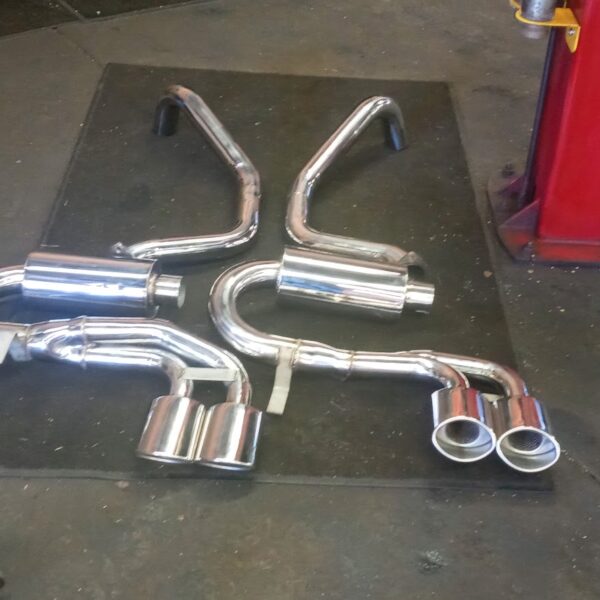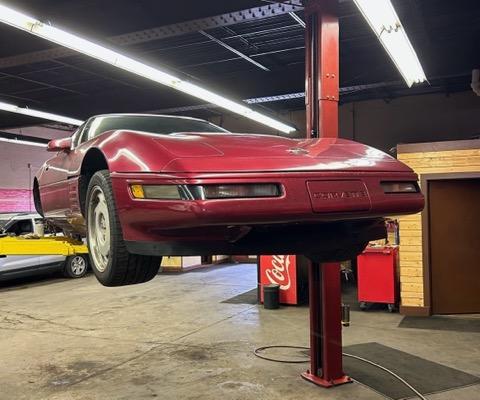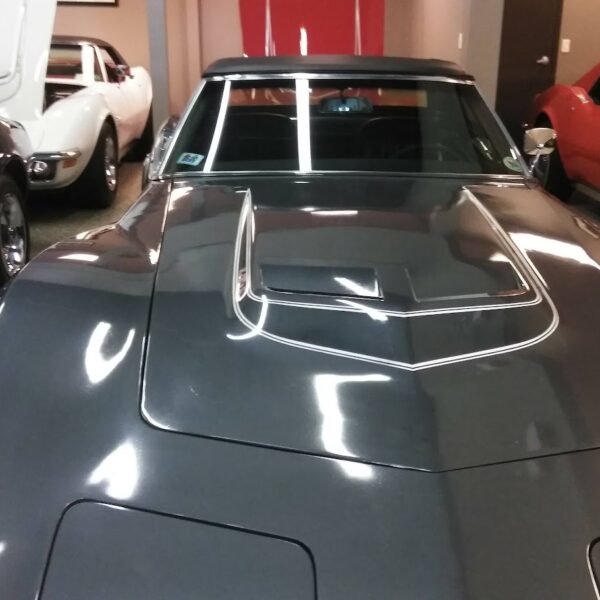One year ago at about 85K miles, my 2000 started to overheat. It came on suddenly. One day it was running fine, next day the temps skyrocketed into the red, even while driving on the freeway. I replaced the thermostat but likely did not purge (burp) the system properly and was still having the same exact issue. So, I replaced the water pump with a Bosch pump. I refilled and burped the system as instructed and bam, no more overheating issues. The car ran perfect as before. When the temp would hit 230, the fans would hit high and drop in back down to 220. While driving, it rarely would go over 200. I realize that if I had burped the system when I replaced the thermostat, it would have likely been fine and not needed the water pump. Lesson learned. The water pump was not leaking or making noise. When I took it off, it spun just fine and the impeller didn’t appear to be clogged. I replaced it anyway.
Now, again, at 101K miles, the car is all of a sudden overheating. Only this time, it will stay cool while driving, but then overheat in traffic. Once the temp hits 220, it skyrockets up past 240 and both fans turn on high but the temp will continue to slowly creep up to the red. I took the radiator cover off and there was a good amount of debris. I bought a long BBQ grill brush that would fit down in between the condenser and the radiator and brushed all that crap out of there and off the front of the condenser. I still had the same problem. Then I replaced the thermostat and burped the system. I still have the same problem.
If it’s debris still stuck in the radiator fins, wouldn’t I see temps gradually increasing over time instead of all of a sudden? Also, the water pump is only a year old. Now, this doesn’t mean it can’t fail, but I’m thinking that the radiator is possibly clogged inside and/or the fins are probably still full of junk that the brush didn’t get out. Both hoses are hot with the one near the thermostat being hotter as it should. The fact that it runs at normal temps while driving leads me to believe it’s not the pump.
I don’t want to spend money I don’t have to. From what I’ve described, what do you think it is? Radiator problem or the water pump again? Is there any way to clean out the radiator without pulling it? The fans appear to be turning on at the correct temps. I did the water pump myself and it was a bitch to get the gaskets lined up and a couple of the bolts back in, but an hour or so and many curse words, I got it all together. I used the opportunity to replace all of the idler pulleys as they were easily accessible with the water pump off.
c5 overheating problem







The engine cooling fan system consists of two electrical cooling fans and three fan relays. The relays are arranged in a series/parallel configuration that allows the powertrain control module (PCM) to operate both fans together at low or high speeds. The cooling fans and fan relays receive battery positive voltage and ignition 1 voltage from the underhood electrical center. The ground path is provided at G102.
During low speed operation, the PCM supplies the ground path for the low speed fan relay through the low speed cooling fan relay control circuit. This energizes the cooling fan 1 relay coil, closes the relay contacts, and supplies battery positive voltage through the cooling fan motor supply voltage circuit to the left cooling fan. The ground path for the left cooling fan is through the cooling fan 3 relay and the right cooling fan. The result is a series circuit with both fans running at low speed.
During high speed operation, the PCM supplies the ground path for the cooling fan 1 relay through the low speed cooling fan relay control circuit. After a 3-second delay, the PCM supplies a ground path for the cooling fan 2 relay and the cooling fan 3 relay through the high-speed cooling fan relay control circuit. This energizes the cooling fan 3 relay coil, closes the relay contacts, and provides a ground path for the left cooling fan. At the same time the cooling fan 2 relay coil is energized closing the relay contacts and provides battery positive voltage on the cooling fan motor supply voltage circuit to the right cooling fan. During high speed fan operation, both engine cooling fans have there own ground path. The result is a parallel circuit with both fans running at high speed.
The low speed cooling fan is commanded on when the coolant temperature reaches 108°C (226°F). It is turned off if the coolant temperature lowers to 104°C (219°F). The high speed cooling fan is commanded on when the coolant temperature reaches 113°C (235°F). It is turned off if the coolant temperature lowers to 108°C (226°F). When the A/C is on and the coolant temperature reaches 85°C (185°F), the low speed cooling fan will be turned on at vehicle speeds less than 56 kPh (35 mph).
Engine Coolant Indicator(s)
COOLANT OVER TEMP
The IPC illuminates the COOLANT OVER TEMP indicator in the message center when the following occurs:
The PCM detects that the engine coolant temperature exceeds 124°C (256°F). The IPC receives a class 2 message from the PCM indicating the high coolant temperature.
The IPC will also illuminate the CHECK GAGES indicator and a chime sounds when this condition exists.
Cooling System
The cooling system’s function is to maintain an efficient engine operating temperature during all engine speeds and operating conditions. The cooling system is designed to remove approximately one-third of the heat produced by the burning of the air-fuel mixture. When the engine is cold, the system cools slowly or not at all. This allows the engine to warm quickly.
Cooling Cycle
Coolant is drawn from the radiator outlet and into the water pump inlet by the water pump. Some coolant will then be pumped from the water pump to the heater core, and then back to the water pump. This provides the passenger compartment with heat and defrost.
Coolant is also pumped through the water pump outlet and into the engine block. In the engine block, the coolant circulates through the water jackets surrounding the cylinders where it absorbs heat.
The coolant is then forced through the cylinder head gasket openings and into the cylinder heads. In the cylinder heads, the coolant flows through the water jackets surrounding the combustion chambers and valve seats, where it absorbs additional heat.
Coolant is also directed to the throttle body. There it circulates through passages in the casting. During initial start-up, the coolant assists in warming the throttle body. During normal operating temperatures, the coolant assists in keeping the throttle body cool.
From the cylinder heads, the coolant is then forced into the thermostat. The flow of coolant will either be stopped at the thermostat until the engine is warmed, or it will flow through the thermostat and into the radiator where it is cooled and the coolant cycle is completed.
Operation of the cooling system requires proper functioning of all cooling system components. The cooling system consists of the following components:
Coolant
The engine coolant is a solution made up of a 50-50 mixture of DEX-COOL and clean drinkable water. The coolant solution carries excess heat away from the engine to the radiator, where the heat is dissipated to the atmosphere.
Radiator
The radiator is a heat exchanger. It consists of a core and two tanks. The aluminum core is a crossflow tube and fin design. This is a series of tubes that extend side to side from the inlet tank to the outlet tank. Fins are placed around the outside of the tubes to improve heat transfer from the coolant to the atmosphere. The inlet and outlet tanks are molded with a high-temperature, nylon-reinforced plastic. A high-temperature rubber gasket seals the tank flange edge. The tanks are clamped to the core with clinch tabs. The tabs are part of the aluminum header at each end of the core. The radiator also has a drain **** which is located in the bottom of the left-hand tank. The drain **** includes the drain **** and drain **** seal.
The radiator removes heat from the coolant passing through it. The fins on the core absorb heat from the coolant passing through the tubes. As air passes between the fins, it absorbs heat and cools the coolant.
During vehicle use, the coolant heats and expands. The coolant that is displaced by this expansion flows into the surge tank. As the coolant circulates, the air is allowed to exit. This is an advantage to the cooling system. Coolant without bubbles absorbs heat much better than coolant with bubbles.